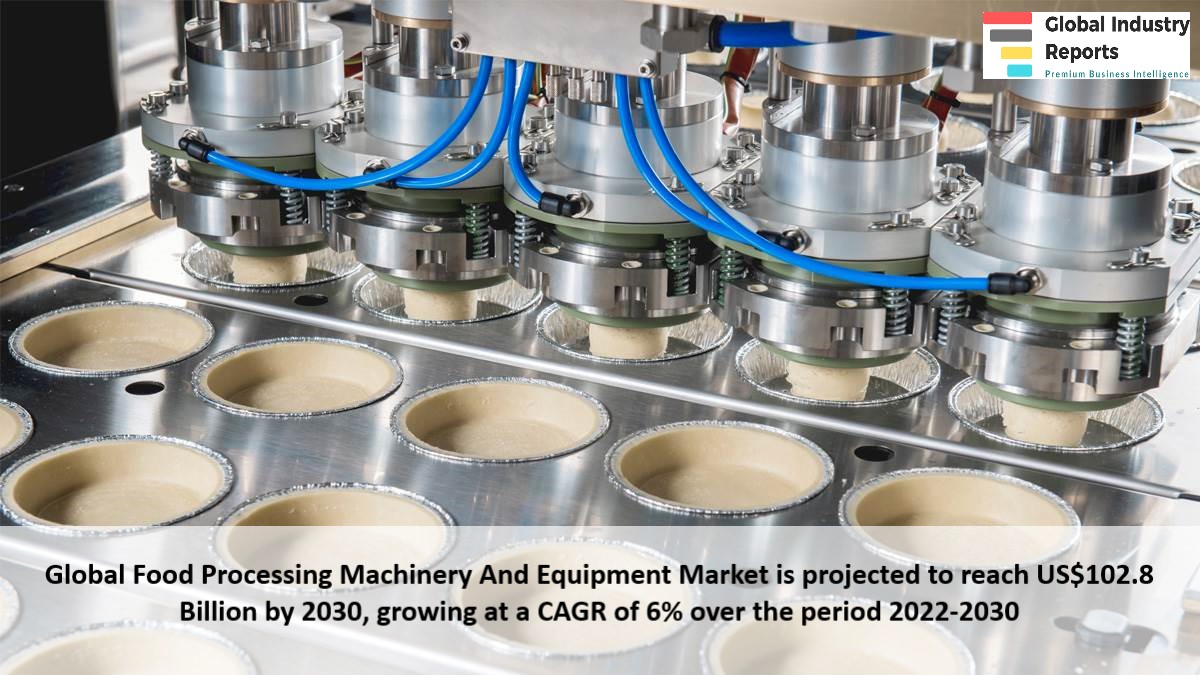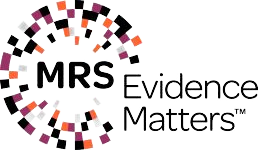Report Overview
- Understand the latest market trends and future growth opportunities for the Food Processing & Handling Equipment industry globally with research from the Global Industry Reports team of in-country analysts – experts by industry and geographic specialization.
- Key trends are clearly and succinctly summarized alongside the most current research data available. Understand and assess competitive threats and plan corporate strategy with our qualitative analysis, insight, and confident growth projections.
- The report will cover the overall analysis and insights in relation to the size and growth rate of the “Food Processing & Handling Equipment Market” by various segments at a global and regional level for the 2010-2030 period, with 2010-2021 as historical data, 2022 as a base year, 2023 as an estimated year and 2023-2030 as forecast period.
Description:
- The global market for Food Processing Machinery and Equipment estimated at US$64.3 Billion in the year 2022, is projected to reach a revised size of US$102.8 Billion by 2030, growing at a CAGR of 6% over the period 2022-2030.
- Depositors, one of the segments analysed in the report, is projected to record 7% CAGR and reach US$31.3 Billion by the end of the analysis period. Taking into account the ongoing post pandemic recovery, growth in the Extruding Machines segment is readjusted to a revised 7.1% CAGR for the next 8-year period.
- The Food Processing Machinery and Equipment market in the U.S. is estimated at US$17.5 Billion in the year 2022. China, the world`s second largest economy, is forecast to reach a projected market size of US$24.6 Billion by the year 2030 trailing a CAGR of 10.8% over the analysis period 2022 to 2030. Among the other noteworthy geographic markets are Japan and Canada, each forecast to grow at 2.6% and 4.4% respectively over the 2022-2030 period. Within Europe, Germany is forecast to grow at approximately 3.7% CAGR.
MARKET DATA INCLUDED
- Unit Sales, Average Selling Prices, Market Size & Growth Trends
- COVID-19 Impact and Global Recession Analysis
- Analysis of US inflation reduction act 2022
- Global competitiveness and key competitor percentage market shares
- Market presence across multiple geographies – Strong/Active/Niche/Trivial
- Online interactive peer-to-peer collaborative bespoke updates
- Market Drivers & Limiters
- Market Forecasts Until 2030, and Historical Data to 2015
- Recent Mergers & Acquisitions
- Company Profiles and Product Portfolios
- Leading Competitors
The Food Processing & Handling Equipment Market Report Includes:
- The report provides a deep dive into details of the industry including definitions, classifications, and industry chain structure.
- Analysis of key supply-side and demand trends.
- Detailed segmentation of international and local products.
- Historic volume and value sizes, company, and brand market shares.
- Five-year forecasts of market trends and market growth.
- Robust and transparent research methodology conducted in-country.
- Qualitative and quantitative analysis of the market based on segmentation involving both economic as well as non-economic factors.
- Provision of market value (USD Billion) data for each segment and sub-segment.
- Analysis by geography, region, Country, and its states.
- A brief overview of the commercial potential of products, technologies, and applications.
- Company profiles of leading market participants dealing in products category.
- Description of properties and manufacturing processes.
- marketed segments on the basis of type, application, end users, region, and others.
- Discussion of the current state, setbacks, innovations, and future needs of the market.
- Examination of the market by application and by product sizes; utility-scale, medium scale and small-scale.
- Country-specific data and analysis for the United States, Russia, China, Germany, United Kingdom, France, Japan, Israel, Saudi Arabia, South Korea, United Arab Emirates, Canada, Switzerland, Australia, India, Italy, Turkey, Qatar, Sweden, Spain, Belgium, Netherlands, Norway, Singapore, Egypt, Denmark, Austria, Vietnam, Brazil, Argentina, Mexico, South Africa, and others.
- Coverage of historical overview, key industrial development and regulatory framework.
- Analysis of competitive developments, such as contracts & agreements, expansions, new product developments, and mergers & acquisitions in the market.
- A look at the opportunities in the market for stakeholders and provide a competitive landscape of the market leaders.
Food Processing & Handling Equipment Reports Scope and Segments:
| Report Attribute | Details |
| Market size in 2022 | US$64.3 Billion |
| Market size forecast in 2030 | US$102.8 Billion |
| Growth Rate | CAGR of 6% from 2022 to 2030 |
| Base year for estimation | 2022 |
| Historical data | 2015 – 2022 |
| Forecast period | 2023 – 2030 |
| Quantitative units | Revenue in USD million and CAGR from 2023 to 2030 |
| Report coverage | Revenue forecast, company ranking, competitive landscape, growth factors, trends, DROT Analysis, Market Dynamics and Challenges, and Strategic Growth Initiatives
COVID-19 Impact, Market Growth Trends, Market Limiters, Competitive Analysis & SWOT for Top Competitors, Mergers & Acquisitions, Company Profiles, Product Portfolios Market Size, Market Shares, Market Forecasts, Market Growth Rates, Units Sold, and Average Selling Prices. |
| Segments covered | Technology, Type, Product, Application and Region |
| Regional scope | North America; Europe; Asia Pacific; Latin America; Middle East and Africa and rest of the world |
| Country scope | United States, Russia, China, Germany, United Kingdom, France, Japan, Israel, Saudi Arabia, South Korea, United Arab Emirates, Canada, Switzerland, Australia, India, Italy, Turkey, Qatar, Sweden, Spain, Belgium, Netherlands, Norway, Singapore, Egypt, Denmark, Austria, Vietnam, Brazil, Argentina, Mexico, South Africa, and others. |
| Key companies profiled | Alfa Laval AB; Anko Food Machine Co. Ltd.; Atlas Pacific Engineering Company Inc.; Baader Group; Bettcher Industries, Inc.; Bigtem Makine A.S.; Bucher Industries AG; Bühler AG; Clextral; Dover Corporation; Equipamientos Cárnicos, S.L; FENCO Food Machinery s.r.l.; Finis Food Processing Equipment B.V.; Food Technology Corporation (FTC); GEA Group AG; Heat and Control Inc.; IMA; JBT Corporation; Key Technology Inc.; KHS GmbH; Krones AG; LEHUI; Marel HF; Meyer Industries; Meyn Food Processing Technology B.V; Middleby Corporation; Multivac Group; Nichimo Co., Ltd.; Paul Craemer GmbH; Paul Mueller Company; Rheon Automatic Machinery Co. Ltd.; Satake Corporation; SPX Flow Inc.; Tetra Pak International S.A.; TNA Australia Pty Ltd.; Tomra Systems ASA; Vanmark Equipment; Welbit Florida; Wenger Manufacturing Inc. and others |
| Customization scope | Free report customization (equivalent up to 20 analyst’s working days) with purchase. Addition or alteration to country, regional & segment scope. |
| Report Format | PDF, PPT, Excel & Online User Account |
Food Processing & Handling Equipment Report Segmented by:
Food Processing Equipment Market, By Type:
- Meat, Poultry, and Seafood Processing Equipment
- Cutters and Grinders
- Smokers, Massagers, and Tumblers
- Mixers
- Tenderizers
- Killing and Defeathering Equipment
- Slicers
- Evisceration Equipment
- Cookers, Roasters, and Grillers
- Deheading and Gutting Equipment
- Filleting Equipment
- Other Meat, Poultry, and Seafood Processing Equipment
- Bakery Processing Equipment
- Ovens and Proofers
- Dough Mixers
- Molders and Sheeters
- Dividers and Rounders
- Depositors
- Other Bakery Processing Equipment
- Beverage Processing Equipment
- Brewery Equipment
- Filtration Equipment
- Carbonation Equipment
- Blenders and Mixers
- Other Beverage Processing Equipment
- Dairy Processing Equipment
- Pasteurizers
- Homogenizers
- Separators
- Evaporators and Drying Equipment
- Membrane Filtration Equipment
- Other Dairy Processing Equipment
- Chocolate and Confectionery Processing Equipment
- Depositors
- Former
- Coating and Spraying Systems
- Mixers
- Coolers
- Other Chocolate and Confectionery Processing Equipment
- Fruits and Vegetables Processing Equipment
- Juice Extractors
- Peelers, Cutters, and Pulpers
- Dryers
- Evaporators
- Other Fruits and Vegetables Processing Equipment
- Other Food Processing Equipment
Food Processing Equipment Mode Of Operation:
- Automatic
- Semi-automatic
Food Processing Equipment Market Type:
- Food Processing Equipment
- Food Service Equipment
- Food Packaging Equipment
Food Processing Equipment Market By End-product Form:
- Solid
- Liquid
- Semi-solid
Food Processing Equipment Market, By Geography:
- North America
- Europe
- Asia-Pacific
- Latin America
- Middle East & Africa
- Rest of the World
Top Companies Covered in Food Processing & Handling Equipment Report:
| Alfa Laval AB | Krones AG |
| Anko Food Machine Co. Ltd. | LEHUI |
| Atlas Pacific Engineering Company Inc. | Marel HF |
| Baader Group | Meyer Industries |
| Bettcher Industries, Inc. | Meyn Food Processing Technology B.V |
| Bigtem Makine A.S. | Middleby Corporation |
| Bucher Industries AG | Multivac Group |
| Bühler AG | Nichimo Co., Ltd. |
| Clextral | Paul Craemer GmbH |
| Dover Corporation | Paul Mueller Company |
| Equipamientos Cárnicos, S.L | Rheon Automatic Machinery Co. Ltd. |
| FENCO Food Machinery s.r.l. | Satake Corporation |
| Finis Food Processing Equipment B.V. | SPX Flow Inc. |
| Food Technology Corporation (FTC) | Tetra Pak International S.A. |
| GEA Group AG | TNA Australia Pty Ltd. |
| Heat and Control Inc. | Tomra Systems ASA |
| IMA | Vanmark Equipment |
| JBT Corporation | Welbit Florida |
| Key Technology Inc. | Wenger Manufacturing Inc. |
| KHS GmbH | Others |
After Sales Support:
- Every updated edition of the report and full data stack will be provided at no extra cost for 24 months.
- Latest 2022 base year report.
- Free Updated edition of 2023 every quarter without any hidden cost.
- No user limitation for the report. Unlimited access within the organization.
- Unrestricted post-sales support at no additional cost
- Free report customization (equivalent up to 10 analyst’s working days) with purchase. Addition or alteration to country, regional & segment scope
- Global Industry Reports will support your post-purchase for a period of 24 months to answer any of your queries related to the following market and to provide you any more data needed, for your analysis.
- Option to purchase regional or selected Chapters from the report.
Key Questions Answered in Food Processing & Handling Equipment Report:
- How will the food processing & handling equipment market evolve?
- Who are the key players in food processing & handling equipment market? What are their strategies?
- What is the competitive landscape in food processing & handling equipment market?
- What are the needs, challenges, and solutions in food processing & handling equipment market?
- What’s the value chain for food processing & handling equipment?
- What’s the forecast for food processing & handling equipment market adoption in the next decade?
- What are the drivers for adoption of food processing & handling equipment?
- What’s the right price? The right timing?











